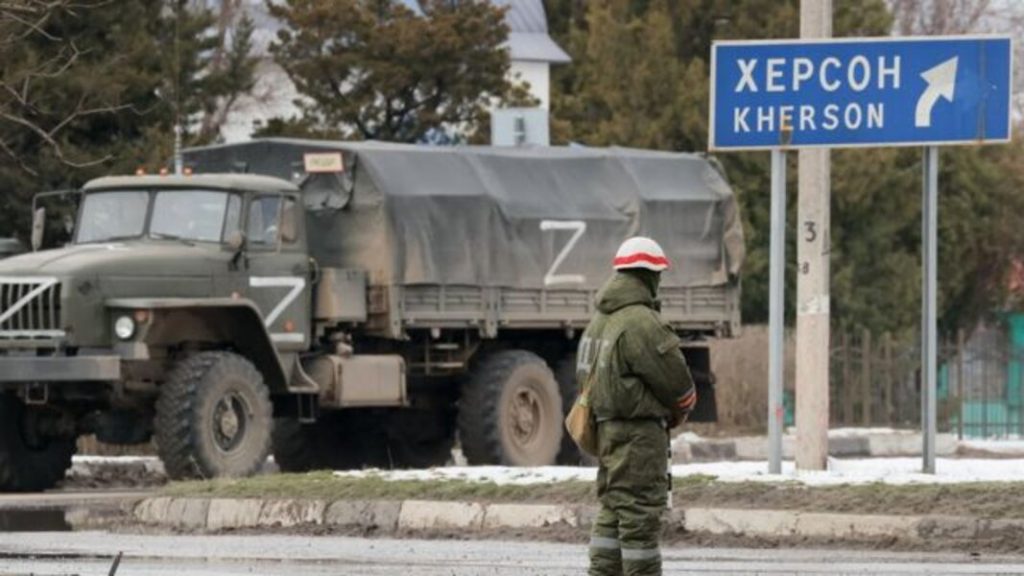The invasion of Ukraine by the Russian army has demonstrated that even in the 21st century a direct seizure of the territories of a sovereign state is possible if there is a minimal “legitimising” component.
For example, a passport of a Russian citizen who is allegedly “oppressed,” or simply Russian-speaking people who can at any time “ask” for help from Russia. This “help” comes in the form of tank armadas, missile and air strikes, destroying entire cities with half a million inhabitants and causing thousands of civilian casualties.
As happened in Ukraine after February 24 Russian propaganda creates flexible insinuations in favour of such territorial expansion, which has become the basis of Russian state policy, and these insinuations are skillfully used as pretexts for invasion. In this way, Putin has tested a very simple and effective, but at the same time extremely dangerous method of foreign expansion, which has no borders and can extend to the territory of any state, not only Ukraine, Poland or the Baltic states.
The likelihood of a Russian offensive is determined by only one factor: a combat-ready army with sufficient human and resource potential. Putin has turned the Russian army into a killing and destruction machine, which in the form of ruins and ashes returns to Russian control territories that once belonged to it within the Russian Empire/USSR or the former Warsaw bloc, whose countries Putin also considers to be Russian property. In case the Kremlin dictator considers it expedient to invade Poland or Hungary or to destabilize the Balkans, the Russian security services will instantly create a pretext: an attack on Russian diplomatic missions accredited in the designated countries, or the use of Serbia as a country that will ask for “help” from Russia in the context of protecting its language or Orthodoxy. The Russian propaganda will easily scale up this newsbreak as an accompaniment to a military invasion.
On July 11, Vladimir Putin signed a decree allowing all citizens of Ukraine to apply for Russian citizenship under a simplified procedure. Previously, this could only be done by those citizens of Ukraine who lived in the so-called “LDPR,” the Zaporizhzhia and Kherson regions. Having Russian citizenship is the aforementioned “legitimising” component. The Kremlin is nurturing ideas to submit to the Duma for ratification of the “Union Treaty of Russia, Ukraine and the Republic of Belarus.” In the near future Putin plans to create a new union of three Slavic countries: Russia, Ukraine and Belarus by “uniting” the three countries into one, recreating something like the Soviet Union. A meeting between Putin, Lukashenko and Yanukovich (yes he is still around) has already been announced for July 15 in Moscow.
If Belarus is already de facto occupied by Russia, then as a “liberated Ukraine” Putin is going to recognize its temporarily occupied territories and possibly “restore” on these Ukrainian territories the power of the fugitive ex-president of Ukraine and surviving dinosaur Viktor Yanukovych. It is with Lukashenko and Yanukovych that Putin is going to sign the so-called Union Treaty. But the Kremlin dictator lacks big cities of Ukraine: it lacks geopolitical credibility to build the “Union State” on the basis of what the Russian army seized during 5 months of war. That is why the meeting in Moscow will most likely become a prologue to discussing the forms and structure of a future totalitarian union. The announcement of a simplified procedure for obtaining Russian citizenship for Ukraine is an alarming sign, and proof that Russia is planning a very long war which will stop only where it is stopped. Putin is determined to occupy the entire territory of Ukraine and only sanctions and weapons can stop it.
Putin’s new decree, like the invasion of Ukraine by the Russian army, is an attack on Ukrainian sovereignty and a violation of the principles of international law. The simplified procedure allows one to obtain a Russian passport without living in Russia for five years after obtaining a residence permit, does not require proof of subsistence, proof of Russian language proficiency, and renunciation of foreign citizenship.
The Kremlin has repeatedly claimed that its plans do not include a complete takeover of Ukraine and a change of government, but the way the war has unfolded since February 24 has allowed these claims to be questioned. Handing out passports to Ukrainians is part of Russian policy, since the Kremlin justifies its aggression against Ukraine, among other things, by the need to “protect” the Russian-speaking population and Russian citizens.
In the context of a serious demographic crisis in Russia, unprecedented since the collapse of the Soviet Union, the forced integration of Ukrainians into Russian society is an important milestone in the context of the promotion of the Kremlin’s aggressive policy in Ukraine. It is no coincidence that on July 12, Dmitry Peskov officially stated that “the simplified procedure for Ukrainians to obtain Russian citizenship is an important part of the special operation. Many Western experts point out that the human factor is the key reason why Putin made the decision to invade Ukraine. Integrating 8-12 million linguistically, mentally and culturally similar people into Russian society is a minimum task for Putin to alleviate the acute shortage of reproductive and working-age population in Russia.

